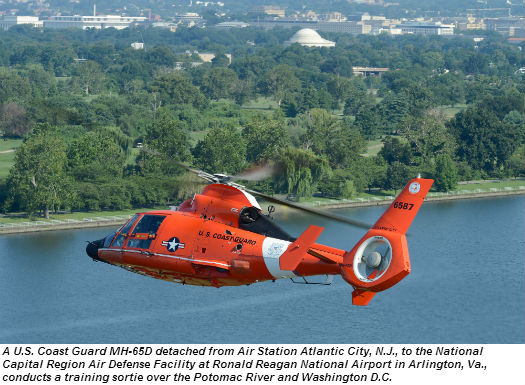
Safeguarding America’s maritime interests is certainly no easy task.
Of course, when it comes to the work of the United States Coast Guard (USCG), there is little that can be classified as easy — not that anyone within it would complain. Even as their responsibilities seemingly increase year after year, while its funding decreases, the men and women of the Coast Guard persevere and succeed at whatever they’re tasked with.
In our continuing series on the efforts of the USCG’s helicopter bases, we look at one of the service’s largest and busiest air stations: Coast Guard Air Station (CGAS) Atlantic City, N.J.

Bringing It All Together
Established as part of a streamlining effort that consolidated aircraft and personnel previously assigned to CGAS Brooklyn, N.Y., and Group-Air Station Cape May, N.J., Group-Air Station Atlantic City became operational on May 18, 1998, and formally opened its doors on June 8. It assumed its current title in 2005 as part of a service-wide reorganization that saw groups replaced by sectors.
Current commanding officer, Capt. Peter Mingo, who accepted this posting in June 2013, was also around for the station’s original commissioning, coming over from the decommissioned Cape May. Although he went on to fly AgustaWestland MH-68As (AW109E Powers) with the Helicopter Interdiction Tactical Squadron in Jacksonville, Fla., and Sikorsky MH-60s at CGAS Elizabeth City, N.C., and has held key USCG positions, including at headquarters, Atlantic City remains special to him: “The sense of pride I enjoy, certainly after returning some 13 years later, has not faded.”
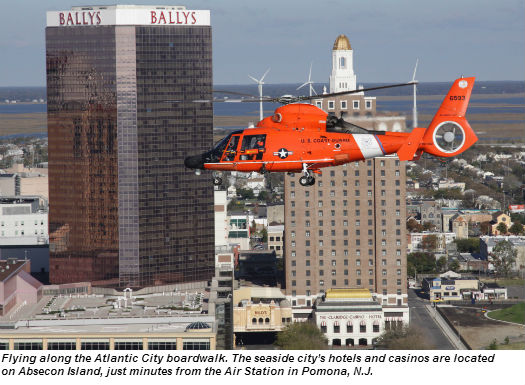
Of course, some things have changed since Mingo first left: “An amazing realization for me was the increase in complexity of operations and maintenance since 2000, when I departed Atlantic City. Increasing to 10 helicopters and adopting the National Capitol Region Air Defense mission has kept us busy and definitively connected to the public we serve.”
Situated in Building 350, CGAS Atlantic City’s purpose-built, 69,200-square-foot (6,430-square-meter) facility is located aboard the U.S. Federal Aviation Administration’s 5,059-acre William J. Hughes Technical Center at the Atlantic City International Airport in Pomona, N.J. The facility includes hangar space for six of the station’s 10 helicopters and space for offices, shops and sleeping berths for the duty crews.
As one of two air stations assigned to the 5th Coast Guard District, Atlantic City’s area of responsibility (AOR) includes around 1,000 miles (1,609 kilometers) of coastal shoreline and inland waterways from Cape Charles, Va., in the 5th District, north to Block Island, R.I., in the 1st District. Adjoining the AORs of CGAS Elizabeth City, to the south and CGAS Cape Cod, Mass., to the north, Atlantic City’s AOR features busy shipping lanes and large commercial- and sport-fishing fleets. While its AOR is typical in size for an MH-65 Dolphin air station and doesn’t have particularly difficult weather or terrain, what makes it unique is that it spans two USCG districts and includes large areas of restricted and/or congested airspace, plus military operating areas that, according to Lieut. Matt Kroll, a pilot and the station’s public affairs officer, keep crews “on their toes.”
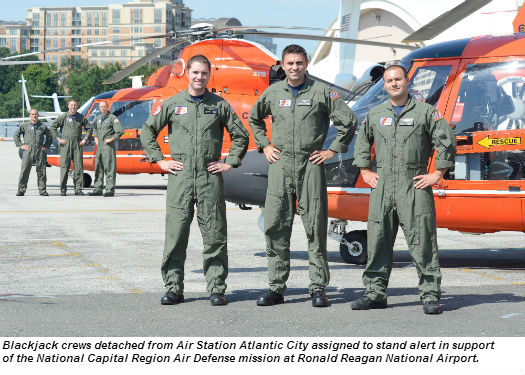
And, the region does require Atlantic City’s crews to perform their fair share of rescues. Between its activation in May 1998 and Sept. 30, 2013, the end of fiscal year (FY) 2013, the station was credited with saving 439 lives (about 29 a year).
That rescue total has been down somewhat in recent years, including In FY2013, when the station performed 127 search-and-rescue (SAR) cases and was credited with 17 lives assisted/saved. But, total usage has remained high: it operates about 10 percent of the service’s Eurocopter/Airbus MH-65s, but flies more than 12 percent of the Dolphin fleet’s hours. In FY2013, Atlantic City totaled more than 6,713 flight hours, encompassing such missions as the aforementioned SAR, plus law enforcement; ports, waterways and coastal security (PWCS); marine environmental protection; and maintenance of aids to navigation.
While all its main missions support both the 1st and 5th districts, one falls completely outside the district command structure — rotary-wing air intercept (RWAI) for the National Capitol/Capital Region (NCR). This mission is controlled directly by NORAD (North American Aerospace Defense Command) and serves to protect the airspace over Washington, D.C. (see p.36, Vertical 911, AAAA 2011).

The USCG, and CGAS Atlantic City, assumed responsibility for the RWAI mission on Sept. 25, 2006, taking over from the U.S. Customs and Border Protection. This eventually resulted in Atlantic City becoming the largest single-airframe air station, as it received funding to acquire five additional Dolphins and double its personnel complement.
To support this mission, two MH-65Ds and associated pilots, crewmembers and maintenance personnel are detached to the NCR Air Defense Facility on a rotating basis. While there, crews perform the RWAI mission and some PWCS tasks only, but nothing else, including no SAR missions. It means duty time features long stretches of standby interspersed with short, intense missions. (In FY2013, RWAI-assigned crews were scrambled or diverted over the NCR only 95 times, or about eight times a month.)
Back in Atlantic City, the mission context and composition is more traditional, and they happen more frequently. On average, the air station performs 190 missions a month, with training and PWCS patrols making up the largest portion of that; SAR flights normally only account for a small portion of this, except during summer months, when the volume of pleasure boaters typically increases.
To help provide a quick response for SAR missions, and other emergencies, Atlantic City maintains two helicopters and crews on 30-minute response status. This also helps when responding to the increased number of medevac calls being received from cruise ships operating from the ports of New York, N.Y.; Philadelphia, Pa.; and Baltimore, Md.
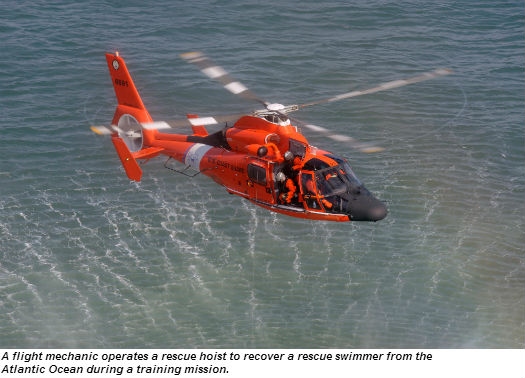
Of course, when one thinks of the Coast Guard, it’s not just the everyday rescues that come to mind, but its efforts around natural disasters. And, no recent disaster in this area has been bigger or more memorable than Sandy.
Above and Beyond
During the final week of October 2012, the Mid-Atlantic and Northeastern U.S. was battered by the remnants of what became known as “Superstorm” Sandy. This second-costliest hurricane in U.S. history damaged or destroyed 650,000 homes and caused an estimated US$50 billion in damage.
Before the storm arrived, Atlantic City’s helicopters assisted with disaster preparations by conducting port assessments from the northern part of Chesapeake Bay in Virginia; up to Baltimore Harbor, Philadelphia and the Delaware Bay; from the Delmarva Peninsula through the Jersey Shore; and up into New York Harbor and all along Long Island. In addition to assisting Coast Guard stations in the storm’s path prepare for Sandy’s arrival, these assessments enabled the USCG to better position assets for effective relief operations. Air Station Atlantic City then made its own preparations, including sheltering six of its MH-65Ds in its hangar space and bringing in multiple crews to stand watch.

Meanwhile, it also sent a SAR-configured Dolphin to Washington, both to spread out its assets and to provide a SAR crew there. Just getting to D.C., though, was its own challenge.
According to Lieut. Leonel Robles, who flew as the co-pilot: “We flew out on Sunday . . . as the early parts of the storm began to make [their] way towards Washington. Since the storm was coming from the east, we wanted to go around to the west and go into D.C. that way. However, ATC [air traffic control] could only fit us in if we flew down the east coast, which was in the heavier turbulence and precipitation area. At that point, we asked for a Pirep [pilot report] before accepting the clearance and were told, ‘Negative, you’re the only ones flying today.’ ”
Immediately after the storm passed, CGAS Atlantic City began flying missions, including dispatching one of its MH-65Ds to Teterboro, N.J., to provide assistance for the New York area. As Lieut. Kroll told Vertical 911, “The next morning, [our crews] logged three lives saved and 10 lives assisted.” Unlike Hurricane Katrina, which caused massive flooding, most of Sandy’s storm surge receded quickly and the air station primarily handled cases where roads had been washed away and people were trapped. One of two survivors that were hoisted to safety from flooded homes in New York also suffered from a medical condition that required transportation to a care facility. Thankfully, even though Sandy inflicted heavy damage, most residents heeded warnings and evacuated ahead of the storm.

Of course, those prior evacuations didn’t make the station any less busy. Said Kroll: “We flew 32 flights in support of Sandy SAR, damage assessment and port security for a darkened New York Harbor.”
The D.C.-assigned SAR crew, meanwhile, according to Robles, “waited out the storm and began flying on Tuesday.” Since that area escaped without significant damage and there were no SAR callouts, the crew, said Robles, made “an assessment flight through Annapolis [Md.] and Baltimore harbors. We then returned to Atlantic City in order to provide another asset at home base, where there was much more damage. The first few days [back] were non-stop, with sorties going on fairly constantly.”
In a post-storm news release, Capt. Nicholas Bartolotta, the station’s commanding officer at the time, said his people “conducted some of the first photo flights of the devastated Jersey Shore, and many of the initial photos on television of the New York/New Jersey area were taken by the MH-65D crews.” He added, “We were also conducting aids-to-navigation flights to assist with re-opening the ports of New York/New Jersey, Philadelphia and Baltimore.”
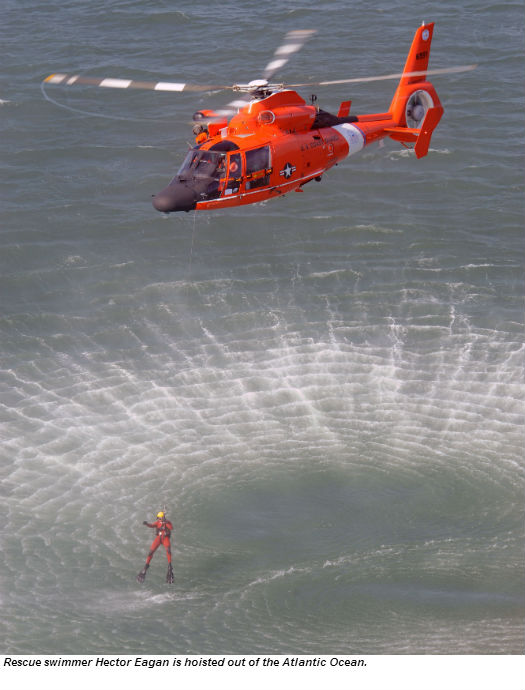
The Aircraft, the Training, the People
In addition to being the air station that flies the most H-65s in the service, CGAS Atlantic City is tasked as the prime unit for the Dolphin. That means its engineering department is responsible for reviewing field-level maintenance practices, maintenance procedure cards, technical orders and manuals, and aircraft configuration changes and records, as well as attending technical meetings and assisting in the development of technical training courses for the H-65 series. Working closely with the Coast Guard’s Aviation Logistics Center in Elizabeth City, the unit may also be tasked to direct or verify the trial installation of an aircraft change or to prototype a change. Plus, it’s generally the first to receive new models: the HH-65C in 2005, the MH-65C in 2008 and the MH-65D in 2010.
In terms of personnel, Atlantic City has 64 pilots, three non-rated warrant officers, 201 enlisted personnel and five civilians — more than double the 27 pilots and 110 enlisted personnel assigned there before the RWAI mission. In addition to the pilots, other key helicopter-related personnel include 72 flight mechanics, 29 basic aircrewmen, 16 rescue swimmers, two aeronautical engineering officers, and a finance and supply officer.
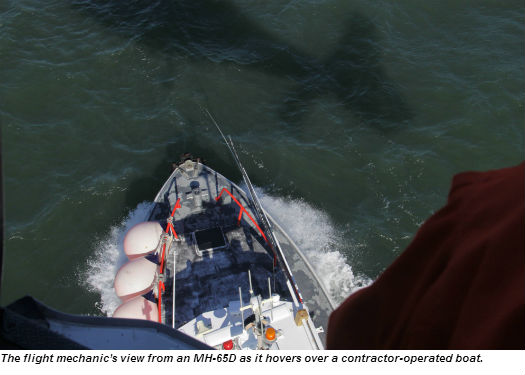
Given the large number of crewmembers and the need to maintain proficiency in several, often-complex missions, Atlantic City conducts multiple training sorties daily and is one of the few air stations that regularly conducts nighttime training. During training evolutions, aircrew proficiency is maintained by practicing the delivery and recovery of rescue swimmers, and the aerial delivery of equipment to and from the water and boats both underway and stopped.
Training for the RWAI mission, meanwhile, is done both locally and over the NCR, and is aided by the U.S. Coast Guard Auxiliary and U.S. Air Force Civil Air Patrol, which provide fixed-wing aircraft that simulate targets.
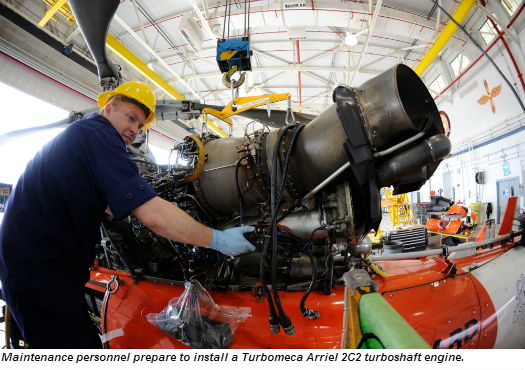
Because of the RWAI mission, the air station, unlike other multi-mission stations, is not required to provide aircraft for aviation detachments aboard the USCG’s high- and medium-endurance cutters (“Operation Iraqi Freedom” in 2003 was the last time one of its Dolphins was so deployed). But, Atlantic City’s crews still conduct deck-landing qualifications whenever a cutter is available. This was particularly valuable in the aftermath of Superstorm Sandy, when most local airports were closed or without power and Atlantic City’s MH-65s had to operate from the deck of the U.S. Navy’s amphibious assault ship USS Wasp.
In closing, station commander Capt. Mingo shared some thoughts on what CGAS Atlantic City means to the region, and what his second tour here has meant personally (a feeling seemingly echoed by many station personnel): “The shoreline of five states, including the Delaware and Chesapeake bays are safer because of Air Station Atlantic City. This tour, without hesitation, is the highlight of my 24-year career.”
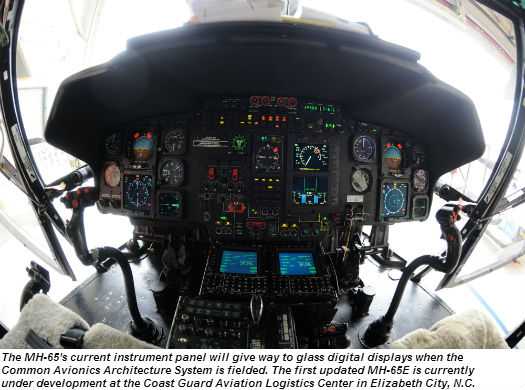
Tom Kaminski is a technical writer in Honeywell International’s Security Product Americas division, but over the years his photos and articles have appeared in numerous magazines, books, trade and professional journals. Tom is currently the North American news editor of Combat Aircraft Monthly and is the author of the US Military Aviation Directory.
Greg L. Davis is an award-winning aviation photojournalist who has been covering aviation for 25 years. He is currently the senior civilian photographer for the USAF at Dover AFB, Del.






